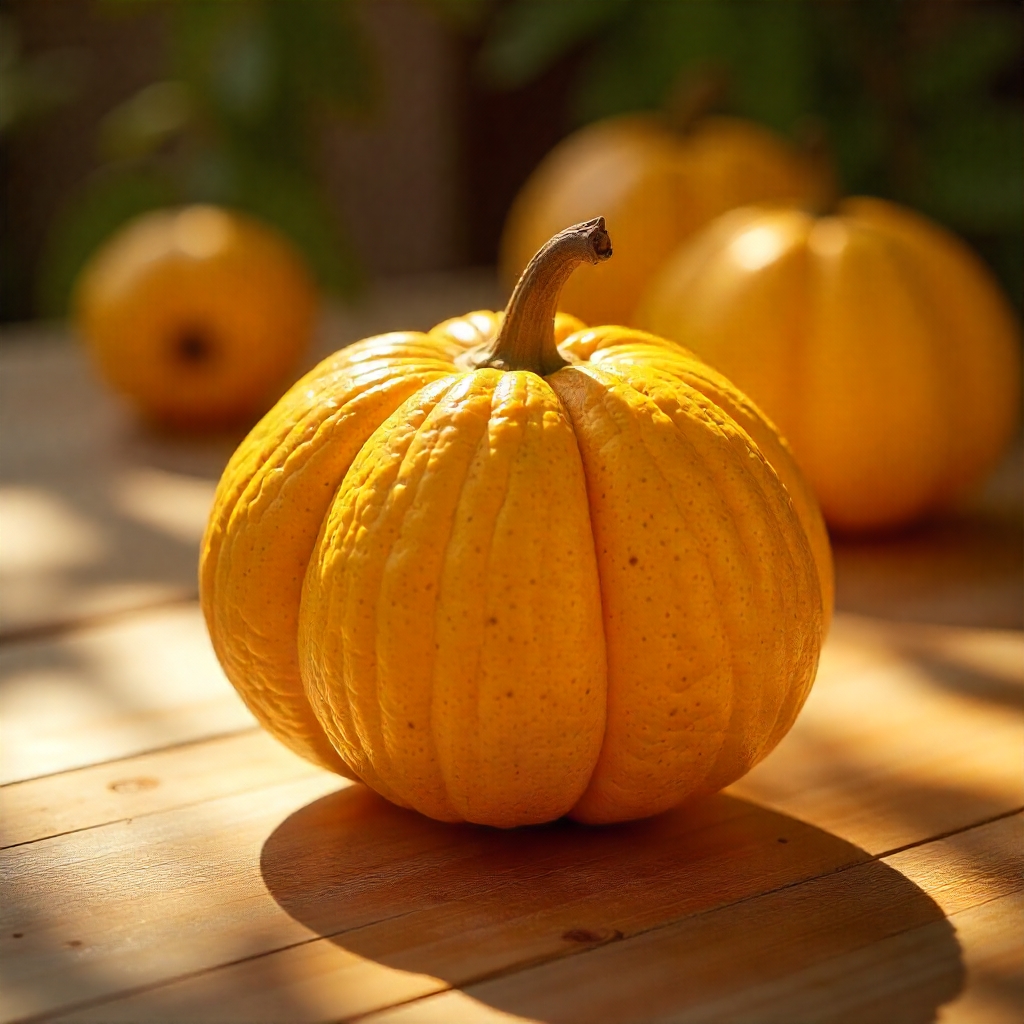Bael (Aegle marmelos): The Sacred Fruit with Healing Power
Introduction
Imagine walking through an Indian village in summer, and you spot a tall tree with thorny branches, dense leaves, and green, round fruits that look like small gourds. That is the Bael tree (Aegle marmelos), a sacred and medicinal plant revered for centuries. Native to India and Southeast Asia, the Bael tree grows abundantly in warm, dry climates and is often found near temples, symbolizing purity and divinity. This hardy tree can withstand extreme heat and drought, making it a true survivor in nature. Its fruits, leaves, bark, and roots are all valuable, giving it the reputation of being a “tree of life.”
So why should we talk about Bael today? Because it is much more than just a tree—it is a part of India’s cultural and medicinal heritage. For thousands of years, Bael has been used in Ayurveda, Siddha, and Unani medicine to treat digestive disorders, improve immunity, and balance the body’s energies. In modern times, as we search for natural remedies for gut health, diabetes, and respiratory issues, Bael is making a remarkable comeback. Let’s dive deep into the world of Bael and uncover its secrets, its alternatives, and the reasons it still holds a place of honor in both tradition and science.
List of 7 Best Alternatives to Bael (Aegle marmelos)
Just like Bael, several plants are celebrated for their healing powers, especially for digestion, immunity, and overall wellness. Here are seven worthy alternatives:
- Amla (Phyllanthus emblica) – India
Known as Indian Gooseberry, Amla is rich in Vitamin C and antioxidants. It is widely used across India to improve digestion, boost immunity, and slow aging. Amla trees grow in both tropical and subtropical regions of India and Southeast Asia. - Bilimbi (Averrhoa bilimbi) – South India & Southeast Asia
Bilimbi, with its tangy, cucumber-like fruit, is often used in chutneys and traditional remedies. In Kerala and Tamil Nadu, it is valued for treating cough, cold, and digestive issues. - Jamun (Syzygium cumini) – India & Sri Lanka
Jamun, the deep purple fruit, is famous for managing blood sugar levels. Traditionally grown in India, Sri Lanka, and Indonesia, it is also considered sacred and used in folk medicine. - Neem (Azadirachta indica) – India & Africa
Neem leaves and bark are known for their detoxifying and antibacterial properties. Popular in India and parts of Africa, neem is often used in gut cleansing, skincare, and immunity-building remedies. - Tamarind (Tamarindus indica) – South Asia & Africa
Tamarind is a tangy fruit with digestive benefits. In Ayurveda, tamarind pulp is used to treat constipation, fever, and bile-related issues. It thrives in tropical regions across South Asia and Africa. - Papaya (Carica papaya) – India & Central America
Papaya is a tropical fruit loved for aiding digestion and improving gut health. Both ripe fruits and papaya leaves are used in traditional remedies in India, Central America, and Africa. - Wood Apple (Limonia acidissima) – Sri Lanka & India
Often confused with Bael, wood apple has a hard shell and aromatic pulp. It is commonly used in Sri Lanka and South India to treat digestive troubles and improve appetite.
When and Where
Bael has a fascinating relationship with time, culture, and geography. Traditionally, Bael fruits are harvested during April to June, when the hard shell matures and the pulp inside becomes sweet and aromatic. In ancient India, families would eagerly wait for Bael season, as the fruits were believed to cool the body and protect against summer heat.
Geographically, Bael is native to India but is also found in Nepal, Sri Lanka, Myanmar, Thailand, and Cambodia. In India, it grows naturally in the Himalayan foothills, Central plains, and Southern dry forests. Farmers cultivate Bael not just for its fruit but also for religious and medicinal purposes.
Sourcing Bael traditionally was simple—local villagers would collect the fruits, dry the pulp, and store it for year-round use. Today, Bael is available in many forms: fresh fruit, dried pulp, powdered leaves, and even capsules. Despite modern packaging, rural communities still rely on the age-old tradition of preparing Bael sherbet, a summer drink that cools the body and soothes digestion.
Interestingly, Bael is not just a fruit for the masses; it has been a healer for priests, ayurvedic vaidyas, and common households alike. Its varieties, such as the small-fruited wild Bael and larger cultivated ones, are both valuable in medicine and ritual use. This deep-rooted presence across time and place makes Bael not just a seasonal fruit but a cultural companion.
Who Uses Bael (Aegle marmelos)?
From rural families in India to Ayurvedic practitioners across the world, Bael is a universal healer. Hindu priests use Bael leaves in the worship of Lord Shiva, as they are considered sacred and purifying. Ayurvedic doctors (vaidyas) prescribe Bael fruit pulp for diarrhea, dysentery, and acidity, while its leaves are used for respiratory and liver conditions.
In villages, grandmothers often recommend Bael sherbet during summer to prevent heat strokes and digestive upsets. In Sri Lanka and Thailand, it is used in folk medicine, while in Myanmar, Bael fruit tea is a household remedy. Globally, as wellness seekers embrace Ayurveda, Bael has found a place in herbal supplements, powders, and detox drinks.
Why Use Bael (Aegle marmelos)?
The reasons are as old as time, yet still relevant today. People seek Bael because:
- For digestion: Bael pulp is famous for treating constipation, diarrhea, and irritable bowel syndrome (IBS).
- For immunity: The fruit and leaves strengthen natural defenses.
- For cooling effect: Bael sherbet is a natural summer coolant.
- For diabetes: Studies suggest Bael leaves may help regulate blood sugar.
- For spiritual use: Bael leaves are essential in Hindu rituals, symbolizing purity and devotion.
Bael is not just about treating illness—it is about building resilience, staying cool in summer, and finding balance between body and mind.
Which Parts of Bael (Aegle marmelos) Are Used?
Every part of the Bael tree serves a purpose:
- Fruit pulp: Used fresh or dried for digestive health.
- Leaves: Used in diabetes, liver problems, and religious rituals.
- Roots: Applied in Ayurvedic medicine for pain relief and heart conditions.
- Bark: Used for its anti-inflammatory and healing properties.
- Seeds: Ground into powders for medicinal purposes.
This all-in-one utility makes Bael a true medicinal powerhouse.
How to Use Bael (Aegle marmelos)?
Bael can be enjoyed in both traditional and modern forms.
- Bael sherbet: A cooling summer drink made from the pulp, water, and jaggery.
- Bael fruit powder: Taken with warm water for digestion.
- Bael tea: Dried slices of Bael fruit boiled in water, popular in Thailand and Myanmar.
- Leaf juice: Consumed for diabetes and liver health.
- Modern supplements: Capsules and tablets available for easy use.
Precaution: Overconsumption of raw Bael can cause constipation, and pregnant women should use it only under medical advice.
Important Facts About Bael (Aegle marmelos)
- Botanical family: Rutaceae (citrus family).
- Active compounds: Tannins, coumarins, marmelosin, and essential oils.
- Scientific studies: Research shows Bael has anti-inflammatory, anti-diabetic, and anti-microbial properties.
- Nutritional value: Rich in Vitamin C, calcium, and fiber.
- Side effects: Excessive intake may cause constipation.
- Cultural fact: Bael leaves are indispensable in Lord Shiva worship.
FAQs on Bael (Aegle marmelos)
1. Is Bael safe to use daily?
Yes, moderate consumption of Bael fruit pulp or sherbet is safe for most people.
2. Can Bael help with stomach problems?
Absolutely! Bael is one of the best remedies for constipation, diarrhea, and IBS.
3. Where can I buy Bael?
Bael fruit, dried pulp, and powders are available in local markets, Ayurvedic shops, and online.
4. How fast does Bael show effects?
For digestive issues, relief may be seen within a few days of regular use.
5. Are there any side effects?
Overconsumption may lead to constipation; pregnant women should consult a doctor before use.
6. Is Bael only used in India?
No, Bael is also popular in Sri Lanka, Myanmar, Thailand, and Southeast Asia.
Conclusion
The story of Bael (Aegle marmelos) is a story of resilience, healing, and faith. From temple rituals to grandmother’s remedies, from Ayurveda’s texts to modern herbal supplements, Bael has woven itself into the cultural and medicinal fabric of Asia. Its fruit cools the summer heat, its leaves purify spiritual offerings, and its roots heal ailments. In a world increasingly drawn to natural remedies, Bael reminds us that nature often holds the simplest answers to complex health issues.
So next time you sip a glass of Bael sherbet or see its sacred leaves adorning a Shiva lingam, remember—you are not just consuming a fruit; you are embracing centuries of tradition, science, and spirituality. Let Bael be a reminder that healing can be natural, holistic, and deeply connected to the rhythms of nature.


